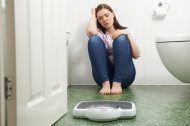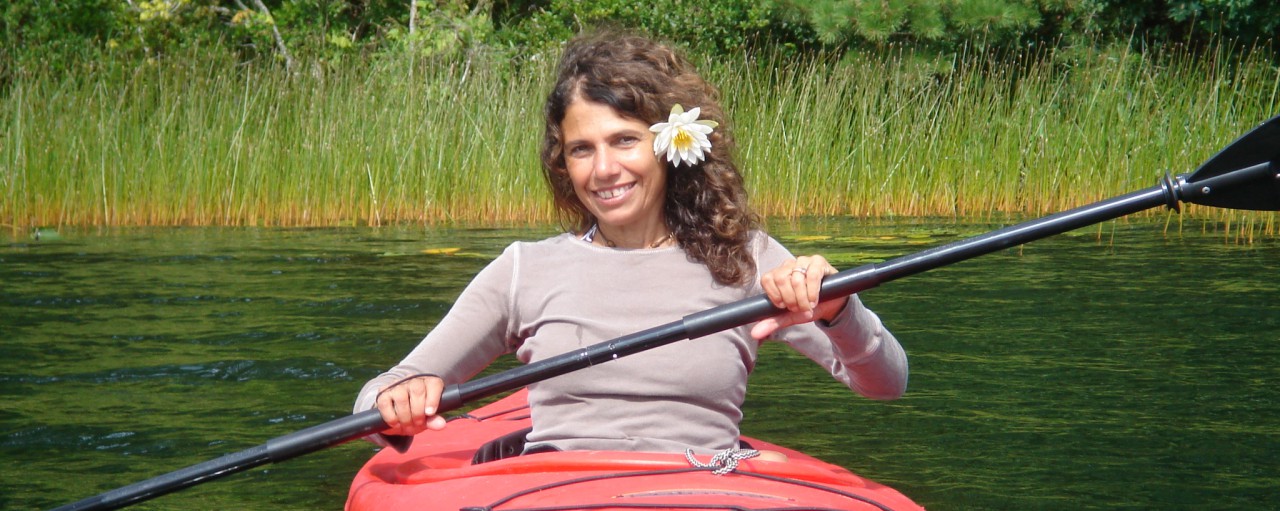 I still remember that day I was sitting around a long conference table in the Endocrinology department at the children’s hospital where I was just hired to help develop a weight management program for teens and children. There were several nurses, a few endocrinologists, myself, another dietitian and my manager. They had decided the children would keep food logs as well as track their calories. I was so glad I was there to enlighten them about that! I explained that counting calories was a very bad idea as this would not only lead to more focus on food, they would likely gain weight, not lose, and even worse could develop an eating disorder. I explained that even the thousands of adults I had worked with over the past 2 decades were never successful with counting calories, and the only ones who were good at it had eating disorders. Phew, now we can move on (I thought).
I still remember that day I was sitting around a long conference table in the Endocrinology department at the children’s hospital where I was just hired to help develop a weight management program for teens and children. There were several nurses, a few endocrinologists, myself, another dietitian and my manager. They had decided the children would keep food logs as well as track their calories. I was so glad I was there to enlighten them about that! I explained that counting calories was a very bad idea as this would not only lead to more focus on food, they would likely gain weight, not lose, and even worse could develop an eating disorder. I explained that even the thousands of adults I had worked with over the past 2 decades were never successful with counting calories, and the only ones who were good at it had eating disorders. Phew, now we can move on (I thought).
No luck. They basically ignored all I said, and my manager was fuming. I was flabbergasted. So the other dietitian and I decided we would gather the research articles refuting this approach, and share it at the next meeting. We did just that but again, no luck. Although I was floored, I had faith they would learn their lesson when it all unfolded.
I was right. When it came time to teach the classes (parents would come as well as the child and siblings if they wanted), the first step was to share their notebooks. These were also brought to individual sessions with the nurses and dietitians. Lo and behold, almost none of the participants did it! Or if they did they were so obviously inaccurate, it was almost funny. Guess what? It took at least 2 years if my memory is correct but eventually they eliminated the calorie counting (Thank God!). The great news is they eventually hired a full time psychologist who had lots of experience with eating disorders and weight issues, and who went on to change the entire program to be more evidenced-based, and focus on health (and not dieting).
Anyway, I picked this topic to write about this week after getting my monthly newsletter from the weight management “practice group” I belong to in the Academy of Nutrition and Dietetics (AND). It included an article entitled “Alternatives to Calorie Counting: Consideration for Pediatric Weight Management”. The article mentioned the AND Position Paper’s recommendations that “treatment plans for managing pediatric overweight should emphasize multi-component, family based programs, which combine nutrition education, physical activity, and behavioral strategies….alternative approaches to calorie counting should be implemented for this population as a means of self-monitoring nutrition decisions”. The article summarized exactly what these “alternative approaches” were.
The author (Giselle Willeford, MS, RDN) does a great job of summarizing the research describing the detrimental affects of having kids or teens count calories (increased focus on food and eating, increased risk of eating disorders or further weight gain). Here is a brief summary of the “alternative to calorie counting” that were described:
- Traffic Light Approach: this method (originally developed by Leonard H. Epstein) calls for dividing foods into 3 categories, Red, Yellow and Green. Green foods are things like vegetables and fruits that you can help yourself to (low calorie and low fat). Yellow foods are those foods that have more calories and that you need to be careful with portion sizes (chicken, rice, etc) but are still healthy. Red foods include sweets, fried foods etc. that you should try to limit and/or decrease in your diet. I am NOT A FAN of the “Stoplight Diet”. Although it sounds simple enough, I have seen first hand the damage it can do. I have had several very young children (age 8, 9) that took this diet to heart. They were those really “good” students who got all A’s and did not want to disappoint their teachers, so when they got the message that red foods should be decreased, they stopped eating them altogether. The patients I saw lost weight when they should have gained, stopped gaining in height, with great repercussions to their family relationships (“she won’t come out for pizza with us anymore”, or “he only will eat the “green” foods so we can’t go out to eat anymore, it is driving us crazy!” These children were on the verge of developing serious eating disorders and actually were at risk for stunting their growth if they kept it up. The good news if I have been successful with helping these kids because they just needed to hear another authority figure (“The Dietitian”) tell them all the reasons it was ok to drink milk and eat cheese and even pizza again. My recommendations: skip the traffic light approach. Traffic lights are for cars.
- Plate Visuals: this is an easy tool to use for those who can’t read or write, so it makes sense to use it with children and teens. You might be familiar with the colorful diagram, and if not see the website: My Plate The visual shows half of the plate with “colors” and this means half your plate should be fruits and vegetables. A quarter of the plate is for “meats” or protein food and a quarter of the plate is for “grains”. The dairy is on the side and that is your serving of milk. There are some things I really like about “My Plate” for education. It is simple and the message is about adding in and not as much focused on taking away. I have used to demonstrate how much fruits and vegetables we need if we want to be healthy. The downside is that some kids, especially picky eating teenagers, really struggle with vegetables because they don’t like the texture or the taste, and so through most of their life refused them. Parents in turn, sometimes just stop making them with the unfortunate outcome being nobody in the family has been exposed over time to vegetables and so nobody eats them. When you show a teen that plate, they tend to feel bad, and like a failure because there is no way they are going to get to that amount of colors on their plate (unless you count brown or yellow, you know, french fries, macaroni and cheese, Doritos). I don’t like making teenagers or even adults feel guilty, so instead we work on increasing exposure and sometimes start with more fruits. Check out the website for more information.
- Portion Sizes: this method uses your own hand to estimate portion sizes. So a “fist” might be a serving of rice. I am not especially irritated by this method, however what if you want 2 fists of rice? I guess the awareness that you are having 2 servings is ok, but then again, will it trigger guilt and overeating? This method traditionally has been used with diabetics, who really do need to follow a special diet with balanced amounts of carbohydrates, so for these folks, it could be very helpful.
- Hunger and Satiety Cues: this of course, being the “non-diet” approach for kids and teens, is my favorite! It teaches strategies to help individuals pay attention to their body signals. For younger children, it is called the “Trust Model” promoted by Ellyn Satter (see Ellyn Satter Institute for specifics). This model describes the “Division of Responsibility” with a focus on the parent’s role of buying healthy foods, determining structured meal times, not catering to kids but allowing them to eat as much or as little as they want at a meal. This teaches children to trust their hunger and fullness mechanisms and promotes a healthier relationship with food and eating. With teens, it becomes tricky because sometimes, after over 10 years of being restricted by parents, an abnormal focus on food (such as sneaking food) has developed (survival!). It may require some counseling for some teens who have a significant “disconnect” between their hunger and fullness related to parental restriction. If your teenager sneaks food or binge eats, or restricts and alternates with binge eating, don’t ignore it. Get help by a therapist who specializes in eating issues.
So the answer is: NO do not ask your teenager to count calories. If they are using some app on their phone to track their food intake, pay attention. Instead, work together to find healthy recipes and meals, go grocery shopping to pick fruits and vegetables your children will eat, have taste tests with new ones. Shut off that TV during meals, sit at the table, don’t allow kids to nibble all day, and instead plan for snacks where kids sit down and enjoy it (not in their rooms, nibbling for hours in front of a computer…..who is going to want to try squash when dinner time rolls around?). Consult with a dietitian regarding strategies to make your environment healthier as well as ideas for healthy but yummy meals. But don’t focus on calories or dieting in your home. Instead, focus on EVERYONE being as healthy as they can be. Enjoy eating out, ordering pizza once in awhile, going out for an ice cream cone. Set an example by living the kind of life you want your child or teenager to live. Remember, kids do as you do, not what you say. If you count calories and diet, your teenager will too. If it hasn’t worked for you, it won’t work for them.

LOVE THIS! Thank you for trying to educate the people in the endocrinology dept at that hospital. I am glad they finally got it. I’m constantly amazed at the hostility with which I am met when I try to explain to people that dieting and counting calories doesn’t work. I realize people don’t like having their beliefs challenged. But ignoring scientific evidence is just bizarre to me.
It’s so sad to see all these kids in the USA getting these “fat” letters. Thank you for teaching this approach. My friend Dr. Katja Rowell teaches this approach to parents as well and it gives me hope that more and more people are getting it.
I see the damage to families when it does develop into an eating disorder. It’s heartbreaking.
Becky Henry
Hope Network, LLC
eatingdisorderfamilysupport.com
LikeLike
Thank you Becky! As I get feedback from different posts I am also feeling more hopeful….people truly are getting tired of the dieting cycle from what I see and I am so grateful for all of the professionals I have come across who truly get it. Rome wasn’t built in a day, and we are getting there…..
LikeLike